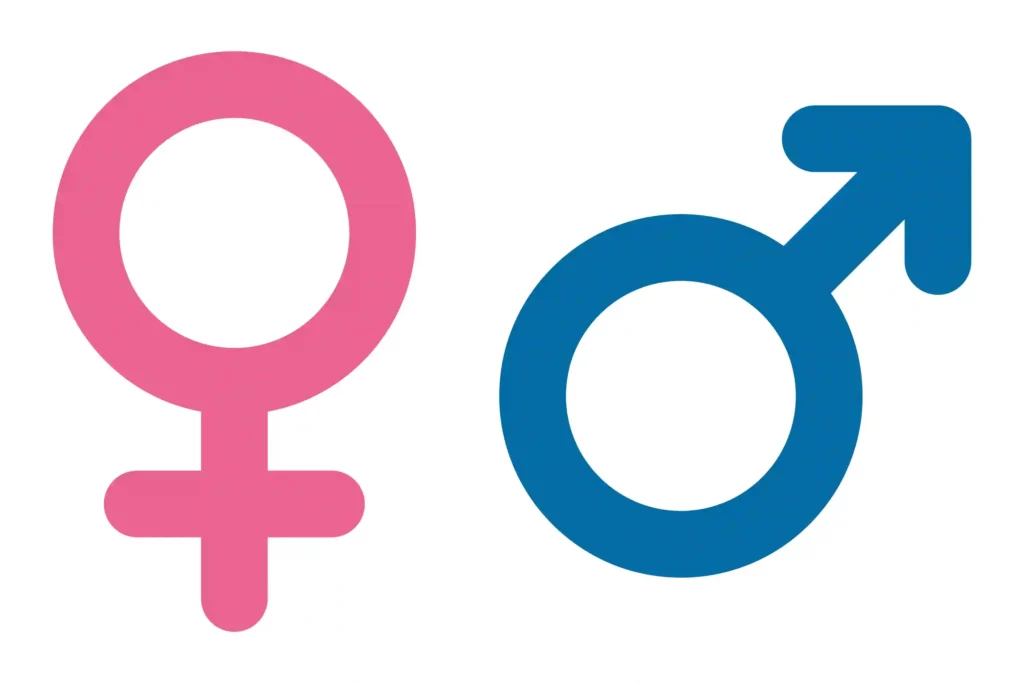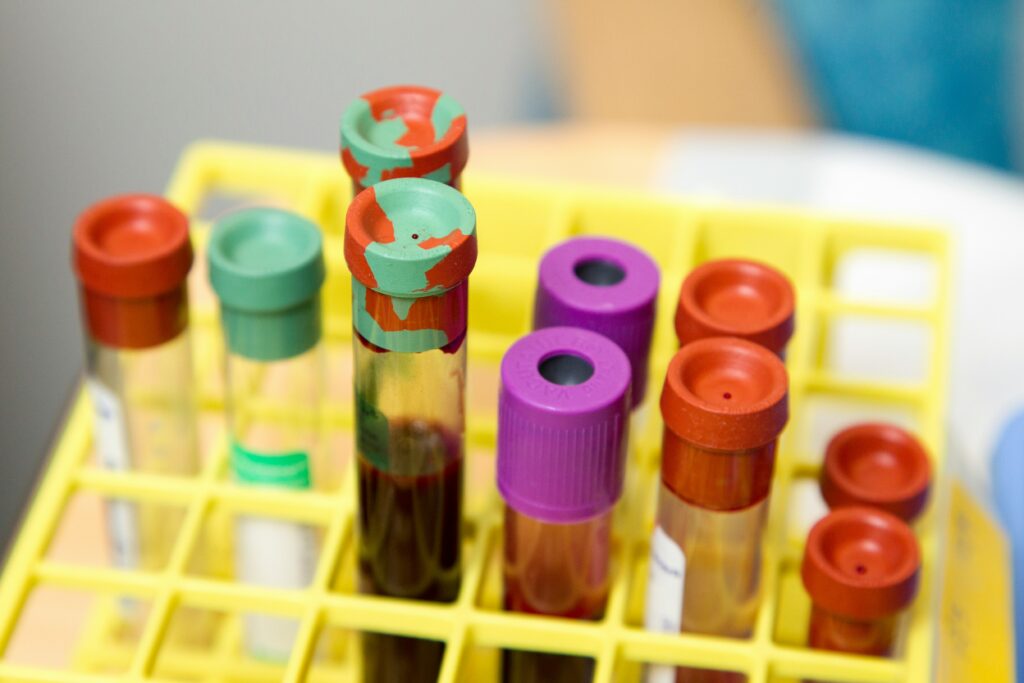
Transitioning is a transformative and liberating journey that many transgender individuals go through to align their physical appearance and gender identity. One of the primary medical methods for transitioning is hormone therapy. Lets learn about Transitioning Male to Female on Hormones.
Finding the right transgender care doctor in Las Vegas is a crucial step in ensuring a safe and effective transition. This guide will discuss what to expect during this process.
Gender dysphoria (GD) refers to the “clinically significant distress or impairment” experienced by individuals whose gender identity does not align with their assigned sex at birth. This condition can manifest in various ways, such as feeling trapped in the wrong body or experiencing anxiety and depression due to societal expectations and norms.
Gender-affirming hormone therapy (GAHT) is the cornerstone of medical transition for many transgender individuals. For transwomen or those transitioning male to female on hormones, GAHT involves the administration of estrogen and anti-androgens to induce feminizing effects on the body.
This therapy helps align physical characteristics with gender identity, providing significant relief from GD. A 2022 study reveals that those who undergo GAHT experience reduced psychological distress and increased life satisfaction.
Before starting GAHT, here are the essential steps to take:
Once you have your diagnosis and letter, you can proceed with GAHT under the guidance of your transgender care doctor.
Every person’s experience with GAHT is unique, but here are some common changes to expect during your transition:
It’s essential to have a supportive network during the transition.
Transitioning male to female on hormones is a significant step toward living authentically. If you’re considering GAHT, it’s crucial to find a compassionate transgender care doctor in Las Vegas to guide you through this journey.
HEALOR specializes in providing transgender health services, including hormone therapy, to help individuals achieve their desired gender-affirming changes safely and effectively. Contact us today to learn more about our services and schedule a consultation.

Sex hormone binding globulin (SHBG) is a crucial protein produced primarily in the liver and in smaller quantities in the testes, responsible for carrying hormones like testosterone, dihydrotestosterone, and estradiol throughout the body. Its main role is to regulate the amount of these hormones in the bloodstream and influence which tissues they can reach, affecting both males and females’ health.
A SHBG blood test measures the levels of SHBG, providing insight into various hormonal balance aspects, including high SHBG levels, and is often conducted alongside tests for testosterone to assess an individual's hormonal health thoroughly. Understanding SHBG levels is vital for diagnosing and managing conditions that affect hormonal balance.
Sex hormone binding globulin (SHBG) is not only integral to the transport of sex hormones like testosterone and estradiol but also plays a pivotal role in regulating their availability and function within the body. Primarily produced in the liver, SHBG controls the plasma distribution of these hormones, ensuring they are adequately available where needed without overwhelming the body's delicate systems. This regulation is crucial for maintaining hormonal balance and supporting overall reproductive health.
SHBG exhibits some intriguing roles beyond human physiology. In fish, for example, SHBG functions uniquely in the gill where it acts as a portal not only for natural steroids but also for xenobiotics, including synthetic steroids. This highlights the evolutionary significance of SHBG in different species, adapting to environmental and biological needs by protecting the organism from potentially harmful external substances.
The expression of the SHBG gene is primarily in the liver in mammals, with minor expression noted in other tissues such as the testis. Intriguingly, in humans, SHBG is also produced in germ cells within the testes, where it plays roles in reproductive functions distinct from its hormonal transport activity. Hormonal control of SHBG levels is finely tuned by estrogens and thyroid hormones, which enhance its production, while androgens tend to suppress it. Understanding these mechanisms is crucial for grasping how SHBG levels fluctuate during different life stages, such as the higher levels observed in children before puberty which stabilize into adulthood.
Several factors significantly impact SHBG levels in individuals, affecting their health and hormonal balance. Understanding these factors can guide better management strategies and diagnostic approaches.
By closely monitoring and understanding these factors, healthcare providers can offer more personalized and effective treatment regimens for their patients, ensuring better health outcomes.
The SHBG (Sex Hormone Binding Globulin) blood test is a vital diagnostic tool used primarily to measure the levels of SHBG in the blood, which plays a crucial role in binding to sex hormones such as testosterone and estrogen. This test is particularly important when symptoms suggest hormonal imbalances that are not explained by total testosterone levels alone.
By integrating SHBG testing into the diagnostic process, healthcare providers can offer more personalized treatment plans, addressing specific hormonal imbalances effectively. This is crucial for managing conditions related to both low and high testosterone levels, enhancing patient care and improving health outcomes.
1. Is it advantageous to have higher levels of SHBG?
Higher levels of Sex Hormone Binding Globulin (SHBG) are generally considered beneficial as they are linked to a protective effect against poor metabolic health. Conversely, lower levels of SHBG are associated with an increased risk of cardiovascular diseases, Type 2 Diabetes Mellitus (T2DM), and other related health issues.
2. What factors influence the levels of sex hormone binding globulin?
Several factors can affect SHBG levels. Increased body weight tends to lower SHBG levels regardless of hormonal status or sex. Dietary fat content also plays a role; higher fat intake results in lower SHBG levels, while a low-fat diet can increase SHBG levels. Additionally, SHBG levels are found to be higher in males with compromised lung function compared to those with healthy lungs.
3. What are the implications of having low SHBG?
Low levels of sex hormone-binding globulin (SHBG) are linked to a variety of health concerns, including cardiovascular disease, cancer, polycystic ovarian syndrome (PCOS), arthritis, and liver disease.
4. How can high sex hormone binding globulin be managed?
Managing high SHBG involves maintaining a healthy body weight and ensuring adequate nutritional intake, particularly protein. Being underweight or consuming a diet low in protein can lead to elevated SHBG levels and reduced sex hormone levels.

In the battle against obesity, a new weapon has emerged. The FDA recently granted approval to Eli Lilly's groundbreaking weight loss medication, Zepbound. This injectable drug, containing tirzepatide as its active ingredient, has shown immense potential in helping individuals struggling with excess weight shed pounds effectively. Zepbound belongs to a class of medications called GLP-1 agonists, which have gained popularity in recent years for their ability to assist in weight management. In this comprehensive guide, we will explore the efficacy, mechanism, eligibility, cost, side effects, and availability of Zepbound, providing you with the essential information you need to make informed decisions about your weight loss journey.
Zepbound operates by harnessing the power of tirzepatide, a hormone that mimics the functions of GLP-1 and GIP. GLP-1 helps reduce appetite and control food intake, while GIP contributes to improved sugar and fat metabolism within the body. By activating these two hormone receptors, Zepbound provides a dual impact on weight loss, making it a formidable weapon in the fight against obesity. The medication's ability to both suppress appetite and enhance the breakdown of sugar and fat sets it apart from other weight loss drugs on the market.
Clinical trials have demonstrated the remarkable effectiveness of Zepbound in facilitating weight loss. In a phase 3 trial, participants who received the highest dosage of tirzepatide lost an average of 18% of their body weight over a span of 72 weeks. This equates to a significant reduction in excess pounds and offers hope to those who have struggled to achieve sustainable weight loss through conventional means. Moreover, one in three patients on the highest dosage of Zepbound lost over 25% of their initial body weight, highlighting the drug's potential for substantial and transformative results.
Zepbound is specifically approved for adults classified as obese, with a body mass index (BMI) of 30 or greater. Additionally, individuals with a BMI of 27 or higher, who also have weight-related medical conditions such as high blood pressure, type 2 diabetes, or cardiovascular disease, may be eligible for treatment. It is crucial to note that Zepbound should be used in conjunction with a reduced-calorie diet and increased physical activity to maximize its effectiveness.
While Zepbound offers a promising solution for weight loss, its affordability remains a concern for many individuals. The list price for a month's supply of Zepbound is approximately $1,060, making it a substantial investment. However, it is important to explore potential avenues for cost savings. Eli Lilly provides a copay discount card program, which can significantly reduce the out-of-pocket expenses associated with Zepbound. Additionally, individuals with commercial insurance coverage may be eligible for reduced pricing, with some able to obtain the medication for as low as $25 per month. However, it is essential to navigate insurance coverage carefully, as not all plans offer reimbursement for weight loss medications.
As with any medication, Zepbound carries the risk of certain side effects. The most commonly reported adverse reactions include gastrointestinal issues such as nausea, diarrhea, vomiting, constipation, and abdominal pain. However, it is important to note that these side effects often diminish over time as the body becomes accustomed to the medication. Other potential side effects include injection site reactions, fatigue, allergic reactions, hair loss, and heartburn. It is crucial to consult with a healthcare professional before starting Zepbound to understand the potential risks and benefits associated with its use.
Zepbound is expected to be available in the United States by the end of the year. However, due to the high demand and limited supply, it is advisable to consult with healthcare providers and pharmacies to ensure timely access to the medication. Physicians will assess individual eligibility based on BMI, weight-related medical conditions, and overall health status before prescribing Zepbound. It is important to adhere to the prescribed dosage and follow the healthcare provider's instructions for optimal results.
Zepbound stands out among other weight loss medications due to its unique mechanism of action and dual hormone receptor activation. While drugs like Ozempic and Wegovy primarily target GLP-1 receptors, Zepbound's ability to activate both GLP-1 and GIP receptors sets it apart in terms of potential efficacy. However, it is essential to consult with a healthcare provider to determine the most suitable medication based on individual health conditions, preferences, and response to treatment.
While Zepbound offers a powerful tool for weight loss, it is crucial to recognize the importance of lifestyle modifications in achieving long-term success. Alongside medication, adopting a balanced, reduced-calorie diet and engaging in regular physical activity are key components of a comprehensive weight management plan. Zepbound is most effective when used in conjunction with these lifestyle changes, as they contribute to overall health and sustainable weight loss.
Weight management is a complex process, and it is not uncommon for individuals to have concerns or misconceptions about obesity medications. It is crucial to address these concerns openly and honestly with healthcare professionals, who can provide personalized guidance and support. Understanding the potential risks and benefits, as well as having realistic expectations, is vital in making informed decisions about weight loss strategies.
The approval of Zepbound represents an important milestone in the treatment of obesity. It signifies a growing recognition of obesity as a chronic disease that requires comprehensive and multifaceted solutions. With ongoing research and development, it is likely that more innovative treatments will become available in the future. It is crucial to stay informed about advancements in obesity management and work closely with healthcare professionals to explore the most suitable options for individual needs.
Zepbound offers hope for individuals struggling with obesity, providing a potent weapon in the fight against excess weight. With its unique dual hormone receptor activation and promising clinical trial results, Zepbound has the potential to revolutionize weight loss strategies. However, it is crucial to approach weight management holistically, incorporating lifestyle modifications and seeking guidance from healthcare professionals. Through a comprehensive approach, individuals can navigate their weight loss journey with confidence, supported by the effectiveness and potential of Zepbound.
Disclaimer: This article is for informational purposes only and should not substitute professional medical advice. Always consult with a healthcare provider before starting any weight loss medication or treatment plan.